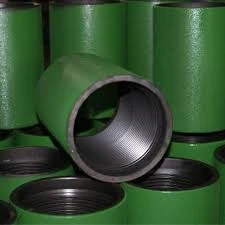- Afrikaans
- Albanian
- Amharic
- Arabic
- Armenian
- Azerbaijani
- Basque
- Belarusian
- Bengali
- Bosnian
- Bulgarian
- Catalan
- Cebuano
- Corsican
- Croatian
- Czech
- Danish
- Dutch
- English
- Esperanto
- Estonian
- Finnish
- French
- Frisian
- Galician
- Georgian
- German
- Greek
- Gujarati
- Haitian Creole
- hausa
- hawaiian
- Hebrew
- Hindi
- Miao
- Hungarian
- Icelandic
- igbo
- Indonesian
- irish
- Italian
- Japanese
- Javanese
- Kannada
- kazakh
- Khmer
- Rwandese
- Korean
- Kurdish
- Kyrgyz
- Lao
- Latin
- Latvian
- Lithuanian
- Luxembourgish
- Macedonian
- Malgashi
- Malay
- Malayalam
- Maltese
- Maori
- Marathi
- Mongolian
- Myanmar
- Nepali
- Norwegian
- Norwegian
- Occitan
- Pashto
- Persian
- Polish
- Portuguese
- Punjabi
- Romanian
- Russian
- Samoan
- Scottish Gaelic
- Serbian
- Sesotho
- Shona
- Sindhi
- Sinhala
- Slovak
- Slovenian
- Somali
- Spanish
- Sundanese
- Swahili
- Swedish
- Tagalog
- Tajik
- Tamil
- Tatar
- Telugu
- Thai
- Turkish
- Turkmen
- Ukrainian
- Urdu
- Uighur
- Uzbek
- Vietnamese
- Welsh
- Bantu
- Yiddish
- Yoruba
- Zulu
Understanding Vacuum Hose Couplings for Efficient Automotive Repairs and Maintenance
Understanding Vacuum Hose Coupling Importance and Applications
Vacuum hose couplings are essential components in a variety of industrial and automotive applications. These components facilitate the connection between vacuum hoses and fittings, ensuring a reliable and secure link that allows for the efficient transfer of air, fluids, and other materials. This article delves into the significance of vacuum hose couplings, their design, types, and applications across various industries.
What is a Vacuum Hose Coupling?
A vacuum hose coupling is a device that connects two vacuum hoses or a vacuum hose to a fitting. The primary purpose of these couplings is to maintain a vacuum seal, preventing air or fluid leaks during operation. They are designed to withstand the pressure changes associated with vacuum systems and ensure that the connected hoses remain intact under different operational conditions.
Importance of Vacuum Hose Couplings
The significance of vacuum hose couplings cannot be overstated, especially in applications where maintaining a vacuum is crucial. In industries such as automotive manufacturing, pharmaceuticals, and food processing, even the smallest leaks can lead to inefficiencies, safety hazards, or product contamination. Vacuum couplings play a vital role in
1. Preventing Leaks A well-designed vacuum hose coupling minimizes the risk of air leaks, which can compromise the efficiency of vacuum systems. 2. Ensuring Safety In industries where hazardous materials are involved, ensuring a leak-proof connection is critical for worker safety and environmental protection.
3. Improving System Efficiency Properly fitted couplings help maintain optimal performance in vacuum systems, reducing energy consumption and operational costs.
4. Facilitating Maintenance Vacuum hose couplings allow for easy disconnection and reconnection of hoses, making maintenance and repairs more efficient.
Types of Vacuum Hose Couplings
There are various types of vacuum hose couplings tailored for specific applications. The most common types include
1. Barb Fittings These are simple couplings with barbed ends that grip the inner wall of the hose. They are often used in low-pressure applications.
2. Clamped Couplings These couplings involve a hose and a fitting secured with a clamp. They provide a more secure connection for medium to high-pressure applications.
3. Quick-Disconnect Couplings These allow for rapid connections and disconnections without needing tools. They are particularly useful in scenarios where hoses need to be regularly swapped or maintained.
4. Flanged Couplings These involve a flange connection and are typically used in larger systems where high vacuum levels are required. They are bolted together to provide a strong seal.
vacuum hose coupling

Applications of Vacuum Hose Couplings
Vacuum hose couplings find applications across various sectors, including
1. Automotive Industry They are used in exhaust systems, fuel systems, and HVAC systems to maintain the necessary vacuum levels for optimal performance.
2. Pharmaceuticals Vacuum couplings are critical in processes such as freeze-drying and material transfer, where sterile conditions must be maintained.
3. Food Processing In food packaging and processing, vacuum systems are employed to remove air from packages. Vacuum hose couplings ensure airtight seals that extend shelf life.
4. Manufacturing In manufacturing processes that require material handling or dust collection, vacuum hose couplings play a pivotal role in ensuring operations run smoothly.
Selecting the Right Vacuum Hose Coupling
When choosing the appropriate vacuum hose coupling, several factors must be considered
1. Material Compatibility Ensure the coupling material is compatible with the fluids or gases involved in the application.
2. Pressure Requirements Different couplings are rated for different pressure levels, so it's essential to select couplings that can withstand the operational pressures of the system.
3. Size Selecting the appropriate size for both the hose and fitting is crucial to maintaining a vacuum seal.
4. Ease of Use Consider how frequently the hoses will need to be connected and disconnected to choose a coupling type that offers the right balance of security and ease of use.
Conclusion
Vacuum hose couplings are integral components that ensure the functionality and efficiency of various industrial and automotive systems. Understanding their importance, applications, and selection criteria enables industries to optimize their operations and maintain safety standards. As technology advances, the design and materials of vacuum hose couplings will continue to evolve, further enhancing their capabilities and applications in an ever-changing marketplace.
-
Tubing Pup Joints: Essential Components for Oil and Gas OperationsNewsJul.10,2025
-
Pup Joints: Essential Components for Reliable Drilling OperationsNewsJul.10,2025
-
Pipe Couplings: Connecting Your World EfficientlyNewsJul.10,2025
-
Mastering Oilfield Operations with Quality Tubing and CasingNewsJul.10,2025
-
High-Quality Casing Couplings for Every NeedNewsJul.10,2025
-
Boost Your Drilling Efficiency with Premium Crossover Tools & Seating NipplesNewsJul.10,2025







